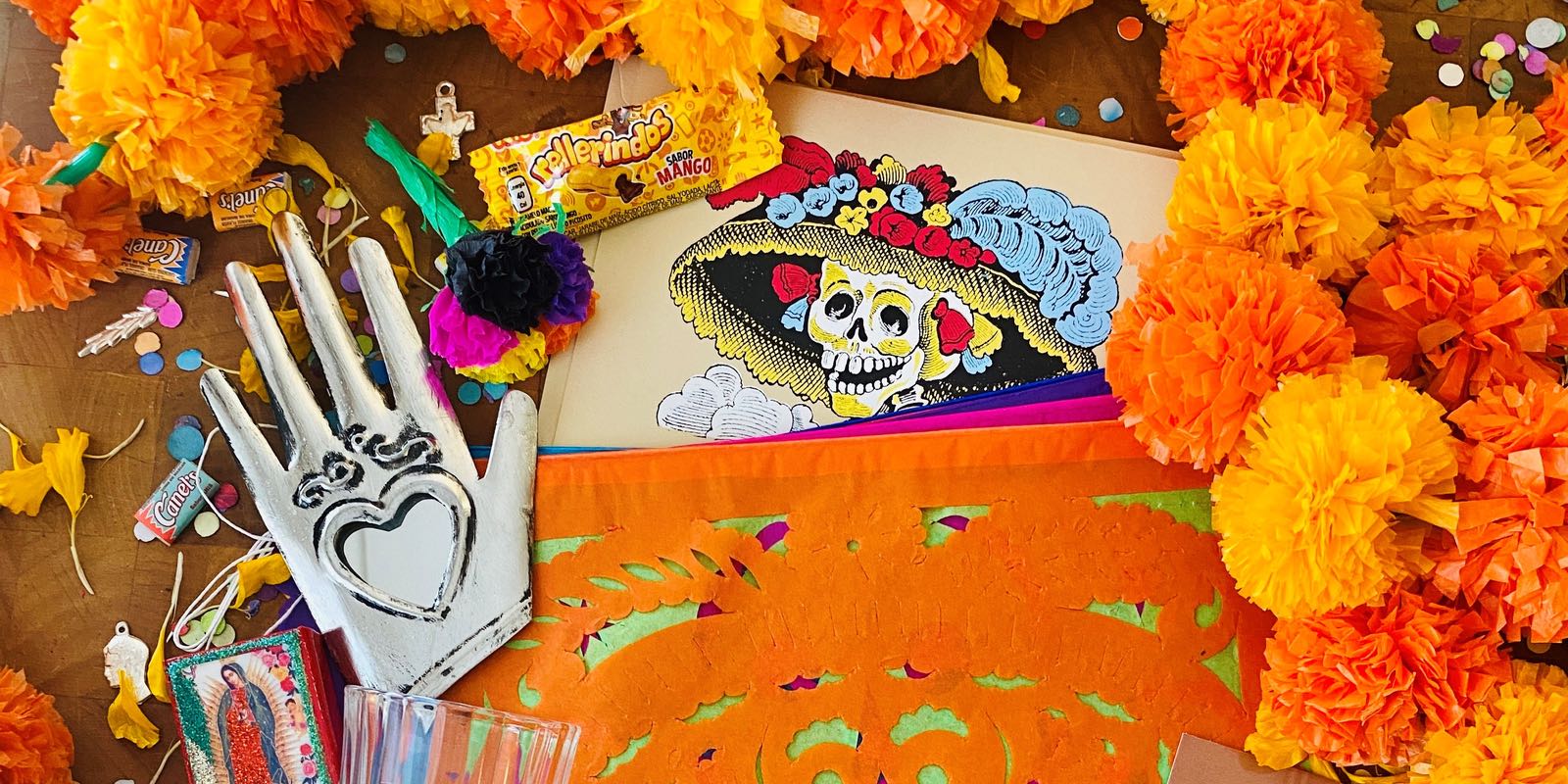Every year on November 1-2, Mexico celebrates Día de Muertos (Day of the Dead), an ode to death through food, music and altars. This tradition originated as an Aztec ritual several thousand years ago. The festivity acknowledges death as an inevitable part of life.
Mexicans believe the gateway between life and Mictlán (the underworld) dissolves during Day of the Dead. Deceased souls return to earth. Families and friends welcome their loved ones by gathering at cemeteries and setting up ofrendas (altars) to honor their lives.
Day of the Dead comes to life in San Diego thanks to its rich Mexican heritage and history. In the past, residents and visitors enjoyed colorful festivals in Barrio Logan, Oceanside and Old Town. This year, you can partake in this colorful custom from home and set up your own altar.
Here’s what you need to build your own Día de Muertos altar and where to find them in San Diego.
Altar Setup
Altars can honor one or more people who have passed away. They can be part of an intimate ritual inside your home or shared with others on your front porch. In the Sherman Heights neighborhood, locals proudly display their altars on their doorstep or front yard. In Barrio Logan, the community comes together to share intricate altars in Chicano Park, the cultural heart of the neighborhood.
The ofrendas can consist of different levels depending on space, preference or intent. The most common levels are two, three and seven. Seven represents the number of obstacles souls must take to reach their final resting place, according to Aztec mythology.
Key Pieces
The most important item is a photograph of the deceased along with personal and favorite objects. Marigolds are also an essential component. Their bright color and aroma are believed to lure the souls back home. They are often utilized to create an arch placed atop the altar. It represents the passage between life and death.
You can get fresh marigolds from local farms at one of the numerous San Diego open-air farmer markets. Stop by the North Park Farmers Market, held 3:00 to 6:00 PM on Thursdays, or at the Little Italy Mercato, held 8:00 AM to 2:00 PM on Saturdays.
Other important elements are salt and copal incense. Salt purifies and cleanses the soul. Copal, a natural tree resin used as incense, purifies and blesses the air. You can find these or similar incenses in holistic spaces like Barrio Logan’s Copal & Tierra or Mission Hills’ Saffron & Sage.
After the arrival of Europeans to Mexico, Christian elements made their way into the altars. They include religious images like saints and crosses. Unique shops like Casa Xovi in Barrio Logan sell crosses imported from Mexico. You can pick from stunning handcrafted wood, steel or ceramic crosses.
The Four Elements
Ofrendas also include the four elements. Fire is represented by candles strategically placed beside the photos. The candles also represent hope and help light the way. The journey back to earth can be long, so a glass of water is important to quench the soul’s thirst. Seeds and fruits represent the earth. Papel Picado or perforated paper is characteristic in many Mexican celebrations. During Día de Muertos, colorful papel picado represents wind and the fragility of life. You can make your own or buy it. Artelexia in North Park sells online and in-store many different sizes of papel picado.
Food and Drinks
You can’t have a Day of the Dead celebration without food. Popular Mexican meals are often prepared to feast with the departed. The most traditional dishes include mole, tacos and tamales. Savor some of these dishes at Tahona Bar in Old Town. This Oaxaca-inspired restaurant offers an innovative take on Mexican gastronomy paired with an impressive mezcal selection. Nearby, Café Coyote has been a San Diego favorite for traditional dishes and hand-made tortillas for many years.
Pan de Muerto is a special sweet bread baked only for this celebration. It has hints of orange and anis, and its design resembles the shape of a skull and crossbones. You can get this unique bread at many Mexican bakeries throughout San Diego. A local favorite is Panchitas with locations in North Park, Golden Hill, Barrio Logan and City Heights.
You also need sugar skulls, an iconic treat representing death itself. Sugar skulls are made from granulated white sugar and decorated with colorful icing. But they serve mostly as decoration and not usually eaten.
Tequila is always a staple in the festivities, both to leave at the altar and to commune with the dead. Say “Salud!” with San Diego’s own Cutwater Spirits reposado or tequila blanco. The local distillery carries 100% blue agave tequila harvested in Mexico.
Another typical drink is beer, a craft that abounds in San Diego. Perfect brews for the occasion include Border X Brewing’s horchata golden stout and Stone Brewing’s Xocoveza, a special collaboration with Tijuana’s Cerveceria Insurgente.
Pro Day of the Dead Tip
Stroll by Barrio Logan’s Walk the Block market, held 12 noon to 6:00 PM on Saturdays. This outdoor shopping, dining and art experience offers original Mexican crafts by local artisans. You might find something unique for your altar like decorative calaveras, flower crowns and Mexican-inspired art.
